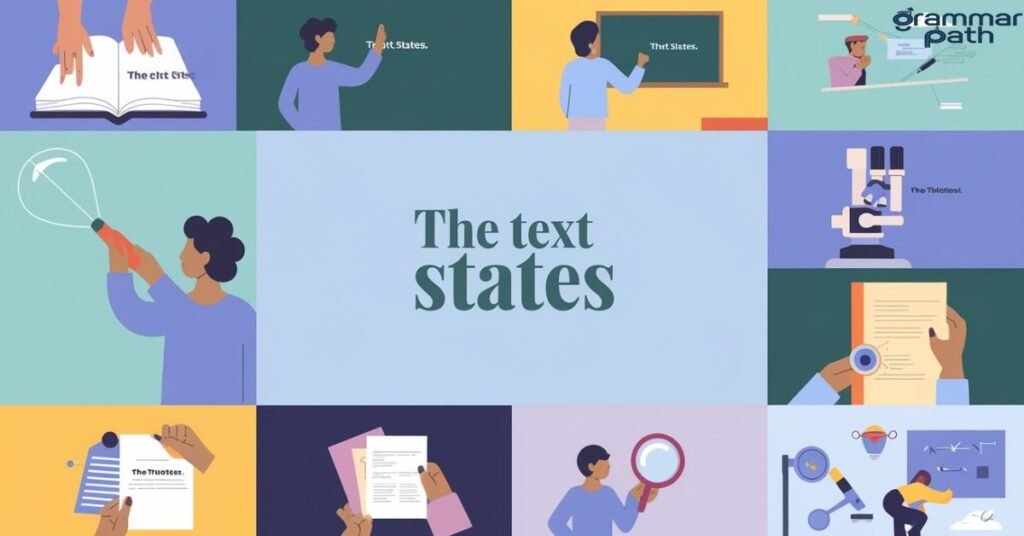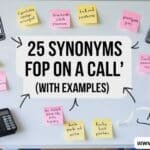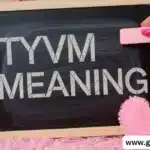Academic and professional writing often requires us to reference information directly from a source. However, using the same phrase repeatedly can make your content sound monotonous and uninspired. One common phrase that tends to get overused is “the text states.”
While it’s clear and straightforward, it can become repetitive, especially in academic work or professional writing where variety is key to engaging the reader. Fortunately, there are several alternative phrases you can use to integrate evidence more dynamically and keep your writing fresh.
Whether you’re drafting a report, composing an essay, or preparing an email, using synonyms for “the text states” will enhance your writing style and make your arguments more persuasive. This article explores ten different expressions you can use instead, complete with scenario examples to illustrate how to apply them effectively. Let’s dive in and discover how these variations can improve your writing!
Is It Professional to Say “the Text States”?
It is perfectly acceptable to use “the text states” in academic writing and professional settings. This phrase is clear, direct, and serves its purpose when you need to cite evidence from text or reference specific information.
However, overusing it can make your writing seem repetitive, especially in longer documents. Readers may start to skim through your work if they see the same phrase multiple times, as it disrupts the flow and engaging writing style that you’re aiming for. This is why it’s important to have a variety of phrases on hand.
What to Say Instead of “the Text States”
- The Document Asserts
- The Passage Claims
- The Article Articulates
- The Writing Specifies
- The Section Mentions
- The Manuscript Declares
- The Narrative Describes
- The Content Reveals
- The Excerpt Indicates
- The Piece Conveys
- The Text Highlights
- The Study Suggests
- The Analysis Shows
- The Author Implies
- The Research Demonstrates
- The Report Clarifies
- The Review Observes
- The Paper Examines
- The Chapter Reflects
- The Source States
1. The Document Asserts
This phrase is particularly useful when you’re referencing a formal document or report that makes a strong statement. It conveys a sense of confidence in the information presented.
Example:
In an email to your team:
“The document asserts that implementing these changes will reduce costs by 20% over the next quarter.”
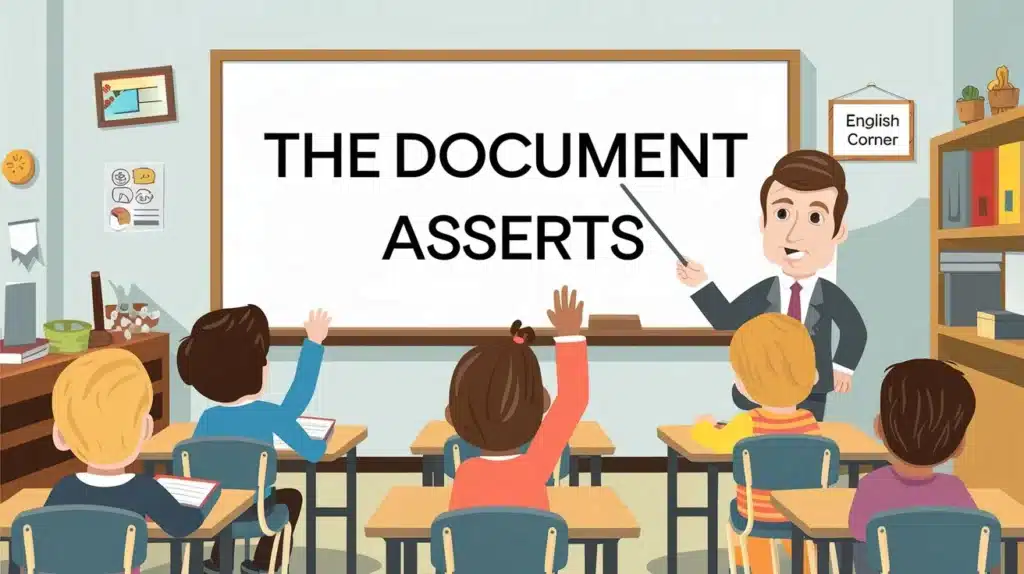
2. The Passage Claims
Use this when citing a specific part of a text that is arguing or suggesting something. It works well in academic writing to present a point of view.
Example:
In an essay:
“The passage claims that early intervention can significantly improve recovery rates in patients with chronic illnesses.”
3. The Article Articulates
This phrase is ideal for scholarly writing where the author explains a concept in detail. It suggests that the information is well-presented and clear.
Example:
In a research paper:
“The article articulates the importance of sustainable practices in modern agriculture.”
4. The Writing Specifies
If you need to highlight specific information from a source, this phrase is precise and to the point. It indicates that the text offers detailed information.
Example:
In a business report:
“The writing specifies the steps necessary to complete the new onboarding process.”
5. The Section Mentions
This is a softer way to introduce information, suggesting that the text touches on a point without making it a central focus. It’s great for supporting details.
Example:
In a project update email:
“The section mentions upcoming deadlines that we should all be aware of.”
6. The Manuscript Declares
Perfect for referencing texts that make definitive statements, this phrase adds a sense of authority to the information being cited.
Example:
In a literary review:
“The manuscript declares that this novel represents a turning point in the author’s career.”
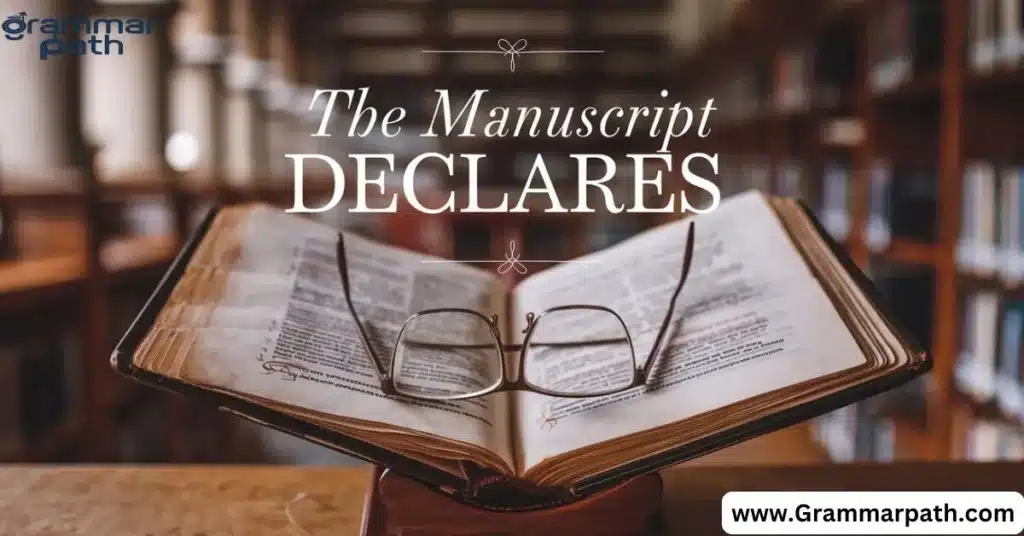
7. The Narrative Describes
Use this phrase when you want to emphasize how something is explained or portrayed in a story or detailed account. It works well in engaging writing that aims to be descriptive.
Example:
In a book review:
“The narrative describes the protagonist’s struggle with identity in a profoundly moving way.”
8. The Content Reveals
Ideal for instances where the text uncovers new or important information, this phrase brings attention to revelations or conclusions drawn by the author.
Example:
In a marketing analysis:
“The content reveals a significant increase in customer engagement following the campaign’s launch.”
9. The Excerpt Indicates
This is a good choice when referencing a short segment of a larger text. It’s precise and suggests that the quoted portion leads to a particular understanding or conclusion.
Example:
In a presentation:
“The excerpt indicates that there has been a steady decline in productivity over the past year.”
10. The Piece Conveys
Use this phrase when the writing expresses an idea, emotion, or message. It’s particularly effective in creative or professional writing where you need to show that the text communicates more than just facts.
Example:
In a client proposal:
“The piece conveys the benefits of adopting a flexible work environment for increasing employee satisfaction.”
Pro Tip
The most important tip when integrating evidence from text is to keep your writing dynamic. Rather than sticking to a rigid structure, mix up your phrasing and sentence length. This will help maintain the reader’s interest, making your academic work or professional document easier to follow.
For example, instead of repeatedly saying “the text states,” try alternating between “the passage claims,” “the content reveals,” or “the article articulates.” Such varied vocabulary enriches your writing, making it sound more polished and sophisticated.
11. The Text Highlights
Use this when you want to draw attention to a particular point or detail within a text. It suggests that the information is important and worth noting.
Example:
In a memo:
“The text highlights the need for immediate action to address the decline in sales.”

12. The Study Suggests
Ideal for academic writing or when referencing research papers, this phrase indicates that the text presents a hypothesis or implies a conclusion without stating it definitively.
Example:
In a research report:
“The study suggests that there is a correlation between regular exercise and improved mental health.”
13. The Analysis Shows
Use this phrase when citing evidence from text that reveals data or trends. It’s great for professional writing where you’re discussing findings or results.
Example:
In a data analysis presentation:
“The analysis shows a clear increase in user engagement after the website redesign.”
14. The Author Implies
This phrase works well when the text hints at something without stating it outright. It’s often used in literary analysis or discussions that involve reading between the lines.
Example:
In a literature review:
“The author implies that societal pressures are a major cause of the character’s inner conflict.”
15. The Research Demonstrates
Use this when referring to scientific studies or research papers that provide strong, clear evidence. It conveys a sense of solid backing and credibility.
Example:
In a scientific journal:
“The research demonstrates that early intervention can drastically improve outcomes for children with learning disabilities.”
16. The Report Clarifies
Perfect for situations where the text provides clarification or additional information on a topic. It suggests that the writing clears up confusion or explains a concept.
Example:
In a corporate communication:
“The report clarifies the guidelines for remote work policies, ensuring all employees are aware of the requirements.”
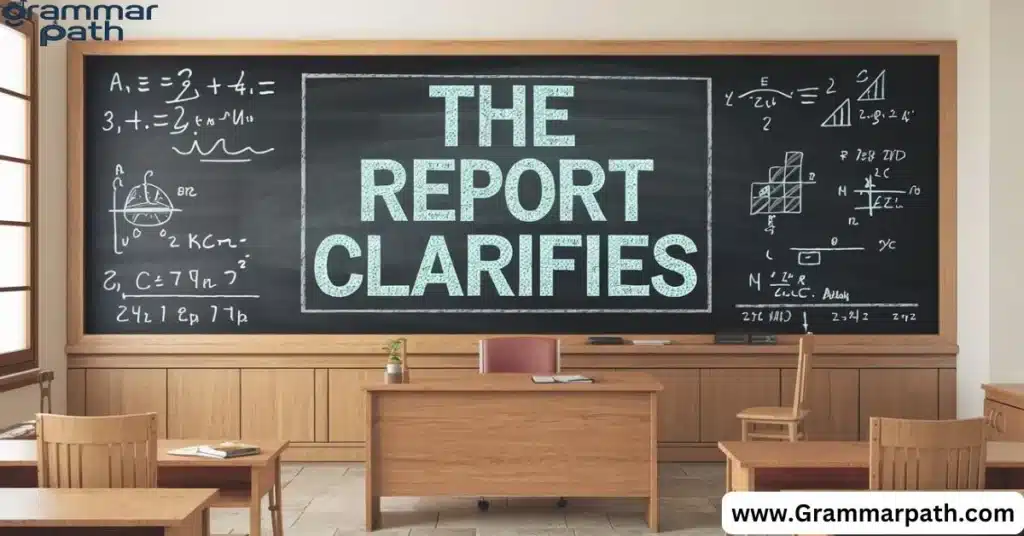
17. The Review Observes
This is a subtle way to introduce evidence from text, especially in academic writing. It implies a more objective, observational tone rather than a strong assertion.
Example:
In a movie review:
“The review observes that the film’s pacing slows down significantly in the second half.”
18. The Paper Examines
Use this phrase to introduce sections of academic work that delve into a topic in depth. It suggests a thorough investigation or study.
Example:
In a thesis:
“The paper examines the effects of climate change on coastal ecosystems, highlighting the urgent need for conservation efforts.”
19. The Chapter Reflects
Ideal for creative or reflective writing, this phrase can be used to indicate that the text portrays thoughts, emotions, or perspectives, especially in a narrative format.
Example:
In a book summary:
“The chapter reflects on the protagonist’s journey through adversity, emphasizing resilience and growth.”
20. The Source States
This is a more formal and straightforward phrase that can be used across various types of writing, from professional documents to academic papers. It’s clear and direct, making it a versatile choice.
Example:
In a legal document:
“The source states that all parties must agree to the terms before the contract is binding.”
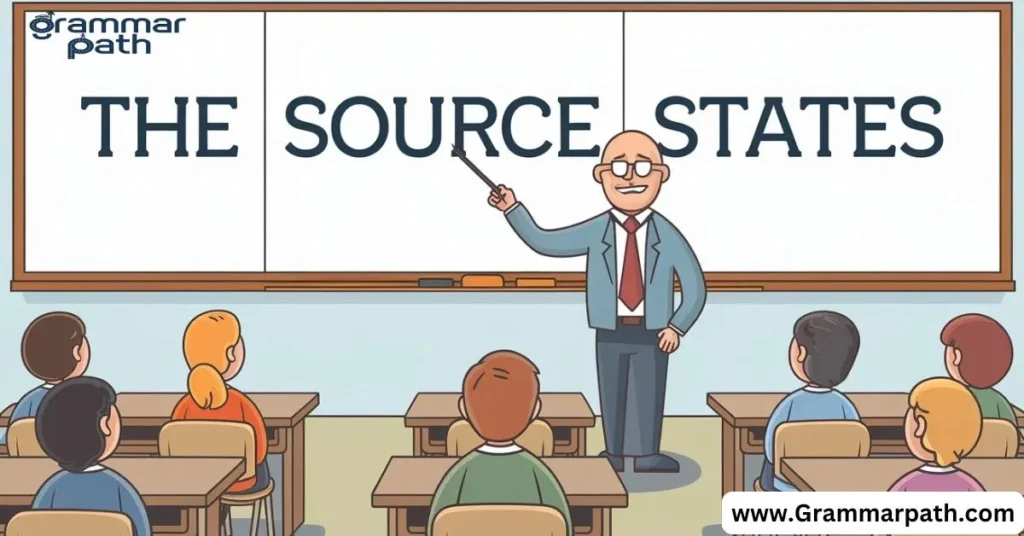
Pro Tip: Choose the Right Synonym Based on Context
When selecting an alternative phrase, consider the tone and context of your writing. For formal documents, phrases like “the report clarifies” or “the research demonstrates” offer a professional touch. For creative works, try “the chapter reflects” or “the narrative describes” to add a bit of nuance. Mixing up these terms helps avoid repetitive language and makes your writing more engaging and dynamic.
Why Using a Variety of Phrases Matters
In any form of writing, clarity is essential, but so is engagement. By switching up how you introduce evidence from text, you help your readers see that you’re actively engaging with the content, not just copying and pasting information. Each alternative phrase adds a subtle nuance, which can change how the reader interprets the data.
For example, saying “the document asserts” sounds more authoritative than “the section mentions,” which might be more appropriate for supporting points rather than central arguments. Professional writing that takes care to choose the right wording can convey more confidence, precision, and persuasiveness.
Conclusion
Using a variety of phrases like “the text states” synonyms is a small but impactful way to elevate your writing. Whether you are drafting a research paper, an email to colleagues, or a business proposal, varying your language keeps your message clear and engaging. As a rule of thumb, think about what best fits the tone and purpose of your piece before choosing your phrase. With the alternative phrases and scenario examples provided here, you’ll be well-equipped to make your writing stand out!
By integrating these alternative phrases into your work, you not only avoid repetitive language but also demonstrate a better grasp of sentence structures. Keep this guide handy the next time you need to add some flair to your writing.

Emily Olivia is an experienced writer specializing in grammar and English language topics. With a passion for clarity and precision, she shares valuable insights on synonyms, grammar rules, and writing tips to help readers enhance their language skills on Grammar Path.

